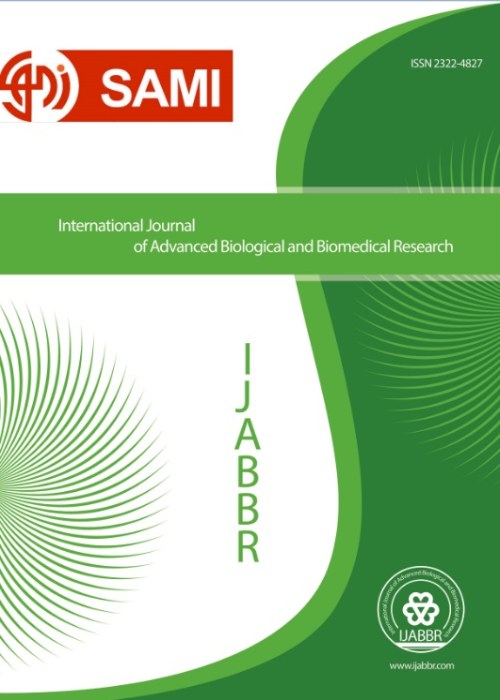Evaluation of Antimicrobial Activity of Rhazya Stricta (Apocynaceae) Extract Prepared with Different Solvents on Staphylococcus Aureus (Staphylococcaceae) Isolated from Humans
Author(s):
Article Type:
Research/Original Article (بدون رتبه معتبر)
Abstract:
Introduction
Bacterial resistance to antibiotics, the first major concern in the 1960s, has reappeared worldwide over the past 20 years. Because these bacteria are not resistant to various conventional therapies, the medicinal and herbal plants used in different countries should be evaluated for their therapeutic potential. These valuable biological resources are a repository of complex active molecules. Therefore, in this study, we tried to evaluate the antimicrobial activity of some medicinal plant extracts on Staphylococcus aureus isolated from humans.Methods
Rhazya stricta was collected and their species were identified in the botanical laboratory of University of Zabol. To prepare plant extract, 40 g of dried leaves were used in 400 cc of solvent (aqueous, ethanol, methanol, ethyl acetate, and hydro-alcoholic). The various strains of Staphylococcus aureus used in this study were isolated from the human nose and identified by biochemical, bacteriological and growth tests as well as standard tests. Antimicrobial effects were investigated by well diffusion method in Müller Hinton agar medium. Statistix ver10 software was used for statistical calculations. Mean comparison was performed using the LSD at the level of one percent and Excel software was also used to draw the shapes.Results
Rhazya stricta extracts had different inhibitory zone diameters against Staphylococcus aureus at 100 ppm dilution (p <0.01). R. stricta ethanolic extract had the greatest effect (average 8.3 mm) on inhibiting the growth of 6 strains of S. aureus. Then aqueous and hydroalcoholic extracts with an average of 7 mm were in the next ranks. The ethyl acetate extract had the lowest effect on the inhibition of S. aureus. The lowest MIC of R. stricta ethanolic extract against S. aureus samples was 3.1 ppm, which was inhibited by four strains. The lowest MBC was 6.2 ppm.Conclusion
Considering the side effects of chemical drugs and antibiotics as well as the potential effect of ethanolic extract of Rhazya stricta on Staphylococcus aureus, it is recommended to use ethanol solvent to evaluate the antimicrobial activity of R. stricta.Keywords:
Language:
English
Published:
International Journal of Advanced Biological and Biomedical Research, Volume:9 Issue: 3, Summer 2021
Pages:
241 to 253
magiran.com/p2314010
دانلود و مطالعه متن این مقاله با یکی از روشهای زیر امکان پذیر است:
اشتراک شخصی
با عضویت و پرداخت آنلاین حق اشتراک یکساله به مبلغ 1,390,000ريال میتوانید 70 عنوان مطلب دانلود کنید!
اشتراک سازمانی
به کتابخانه دانشگاه یا محل کار خود پیشنهاد کنید تا اشتراک سازمانی این پایگاه را برای دسترسی نامحدود همه کاربران به متن مطالب تهیه نمایند!
توجه!
- حق عضویت دریافتی صرف حمایت از نشریات عضو و نگهداری، تکمیل و توسعه مگیران میشود.
- پرداخت حق اشتراک و دانلود مقالات اجازه بازنشر آن در سایر رسانههای چاپی و دیجیتال را به کاربر نمیدهد.
In order to view content subscription is required
Personal subscription
Subscribe magiran.com for 70 € euros via PayPal and download 70 articles during a year.
Organization subscription
Please contact us to subscribe your university or library for unlimited access!


